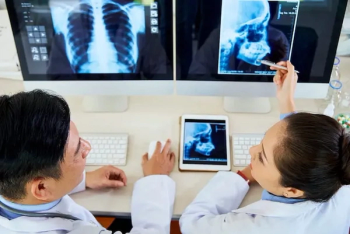
Why Being Specific Is Important
If referring physicians would say what they really want, the life of a radiologist would be much easier.
In my radiology-residency department, back in the day, one of the attendings had emerged from semi-retirement to dabble in the academic world. He made a point of sitting in for as many of the daily teaching conferences as he could.
Occasionally during one of these sessions, he’d make a request of whoever was lecturing, that they offer greater detail about a particular aspect of the subject at hand. He clearly thought that something merited more focused coverage, whether for the residents’ edification or his own, but exactly what he wanted to hear more about was unspecified. For instance, if the talk was about ultrasounds of the right upper quadrant, during the Q&A session his input might be: “Say something about the common bile duct.”
The lecturer’s reaction was, understandably, often one of confusion. After all, he’d just spent the greater part of an hour talking about a number of things, including the CBD, and he probably felt he’d gone into whatever detail was appropriate to the scope of his talk. If a member of the audience felt that some important aspect had not been addressed, they should be able to specify it.
As it stood, while the speakers would usually try to field the query politely, it was clear that some of them perceived the “say something” request as more of a demand than anything else. A demand implying that their lecture had been less than complete, for instance. At least once or twice, I recall a speaker responding with the equivalent of “What else would you like me to say?”
I’m intermittently reminded of those interactions in my daily radiology work-for instance, an addendum request from just this past week, pertaining to an abdominal MR I’d read. The clinician wanted me to “comment on the bile duct.”
Looking back in my report, I saw that I had commented on the ducts (plural), stating that they were normal. The request therefore had me looking back at the images, wondering if there was an abnormality that I might have missed. Nope, still normal.
When I get these requests to make addenda for things I have already sufficiently covered, I’ve got to admit it’s irksome. It interrupts whatever I was doing, and at least briefly gives me a scare that I might not have done as good/thorough a job as I’d like. Or that some referrers are less than 100 percent satisfied with my work.
I usually find out, instead, that I am being interrupted because someone couldn’t be bothered to really read my report. They glanced over it and, not seeing whatever statement they wanted, assumed the omission was the result of my error rather than their cursory perusal. The conveyed attitude is that the time it would take them to reread the report, maybe with a little more attention, is more valuable than the time it would take me to generate an addendum. Further, it’s not even worth their time to make the addendum request specific to their interests: Perhaps “Please specify whether there are gallstones,” rather than “Say something about the gallbladder.”
The path of least resistance and referrer-appeasement, of course, would be to just generate whatever addendum is requested, no matter how redundant/silly it seems to repeat something that was already said. Maybe in another 20 years I’ll have been softened-up enough to do just that. For now, I’ve still got enough pluck to offer some resistance. No, that addendum doesn’t need to be made, unless you give me the rationale for your request.
Let’s say, for instance, the referrer wants measurements for the hepatic and the common ducts, because he’s following some newfangled guidelines that his favorite academic journal just proposed. Or maybe it’s because he’s doing his own research, and gathering data. Well now, that’s information I wouldn’t ordinarily include in a normal report, so if the addendum request specifies that, I’ll go ahead and comply.
Of course, if that’s the case, maybe the referrer should make mention of it in the “reason for exam” in the first place. Again, taking a few of his precious seconds to add “Please measure CHD and CBD in report” after the usual “R/O chole.”
Better yet, if the requester is another doc with equal access to the medical record, and wants a statement documenting some nitpicky aspect of a normal imaging study, there’s nothing stopping him from looking at the images and writing a note of his own in the patient’s chart.
Newsletter
Stay at the forefront of radiology with the Diagnostic Imaging newsletter, delivering the latest news, clinical insights, and imaging advancements for today’s radiologists.




